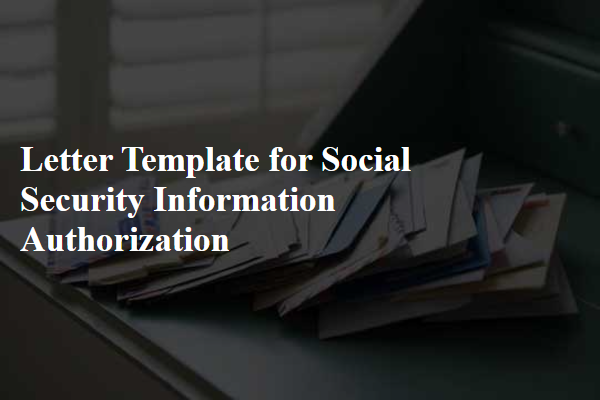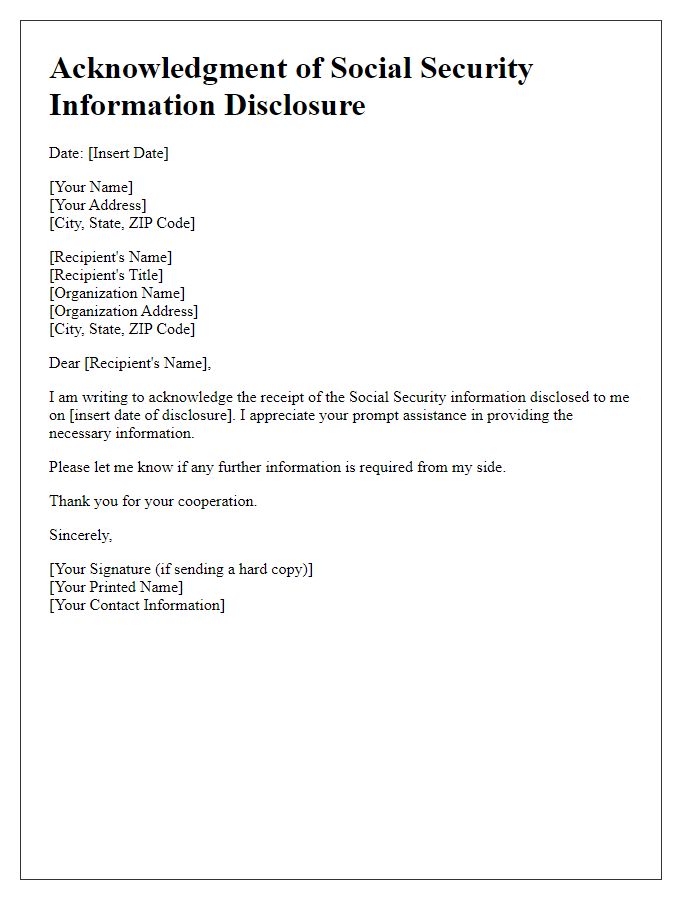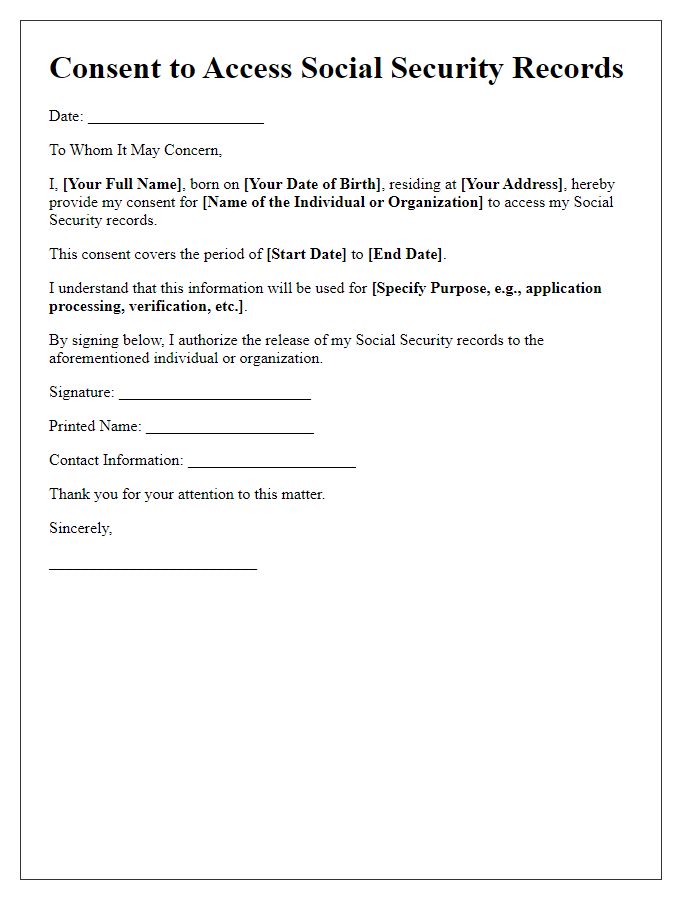Are you looking to streamline your social security information requests? Writing a clear and concise authorization letter can make all the difference in ensuring your needs are met efficiently. In this article, we'll guide you through a simple template that empowers you to grant permission for accessing your social security information without hassle. Stick around to discover the essential components that will make your authorization letter effective and user-friendly!

Clear Identity Verification
Clear identity verification is essential for securing sensitive social security information. The authorization process typically requires personal details, including the full name, date of birth, and social security number (SSN) of the individual involved. Documents such as government-issued photo ID (like a driver's license or passport), proof of address (such as utility bills), and any previous social security communication must be collected to authenticate identity. The Social Security Administration (SSA) often utilizes secure online portals and encrypted communication methods to process these requests. A lack of proper verification may lead to delays or denial of access to essential services and benefits, affecting individuals relying on social security assistance in critical circumstances.
Purpose of Authorization
Social Security information authorization serves as a formal agreement allowing a third party to access sensitive personal data held by the Social Security Administration (SSA). This authorization is essential for individuals seeking assistance with benefits, claims processing, or representation in legal matters. Clear identification of the authorized party, such as an attorney or family member, is crucial. This process often occurs when navigating complex issues like disability claims or retirement benefits, ensuring the designated representative can act on the individual's behalf. Properly executed authorization includes personal details, specific purposes for access, and duration of the granted permission.
Specific Information Requested
Social Security information authorization typically involves documents that grant permission for specific entities to access personal data concerning an individual's benefits or payments. Commonly required details may include the individual's full name, Social Security number, date of birth, and contact information. Additionally, the authorization form often specifies the type of information needed from the Social Security Administration (SSA), which may encompass benefit verification, income records, or medical information related to disability claims. Completed forms generally must be submitted directly to the SSA or a designated representative (such as a family member or attorney) who will manage the inquiry on behalf of the individual. Proper identification and any relevant case numbers are also crucial to ensure accurate processing.
Duration of Authorization
Authorization duration specifies the time frame during which individuals grant permission to access their personal social security information. Typically, this authorization lasts up to six months, allowing authorized entities like financial institutions or healthcare providers to retrieve pertinent information. An expiration date ensures protection of sensitive data beyond the agreed period. For example, if the authorization begins on January 1, 2024, it may end on June 30, 2024, unless renewed. Regular communication alerts individuals when approaching the end of this duration, encouraging timely renewals and maintaining privacy. Clear documentation of authorization duration supports compliance with regulations, such as the Privacy Act of 1974, and fosters trust between individuals and authorized entities.
Signature and Date
The authorization for social security information release requires the individual's full name, social security number, and specific details regarding the authorized recipient, such as their name and relationship. This document also mandates a clear statement allowing the Social Security Administration (SSA) to disclose pertinent information, including benefits status, earnings records, or medical information. Additionally, space must be allocated for the individual's signature and date to validate the authorization, ensuring compliance with privacy regulations and safeguarding personal information. Properly executed, this authorization facilitates communication between the SSA and the designated party for necessary assistance.
Letter Template For Social Security Information Authorization Samples
Letter template of authorization for social security information release

Letter template of acknowledgment for social security information disclosure












Comments